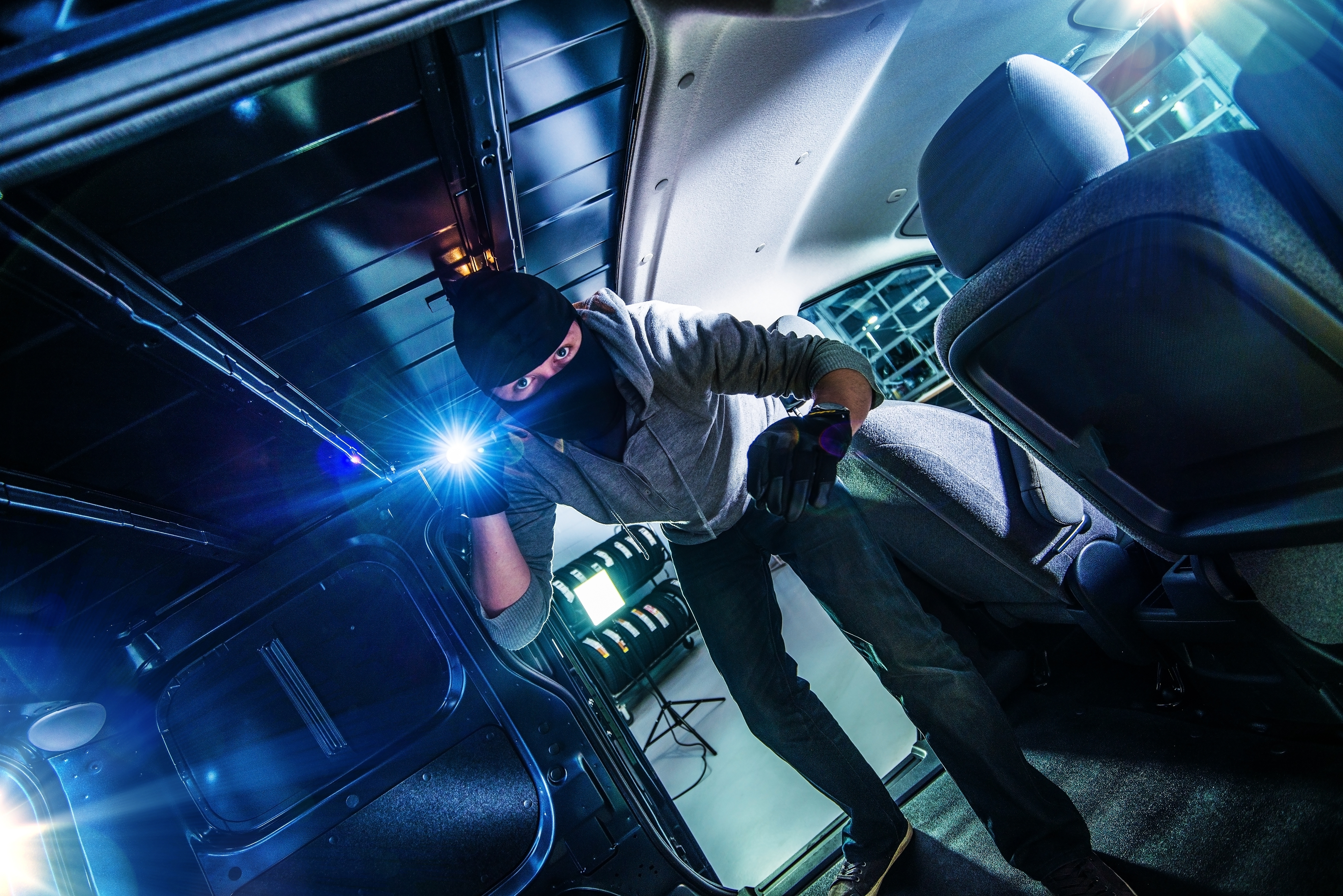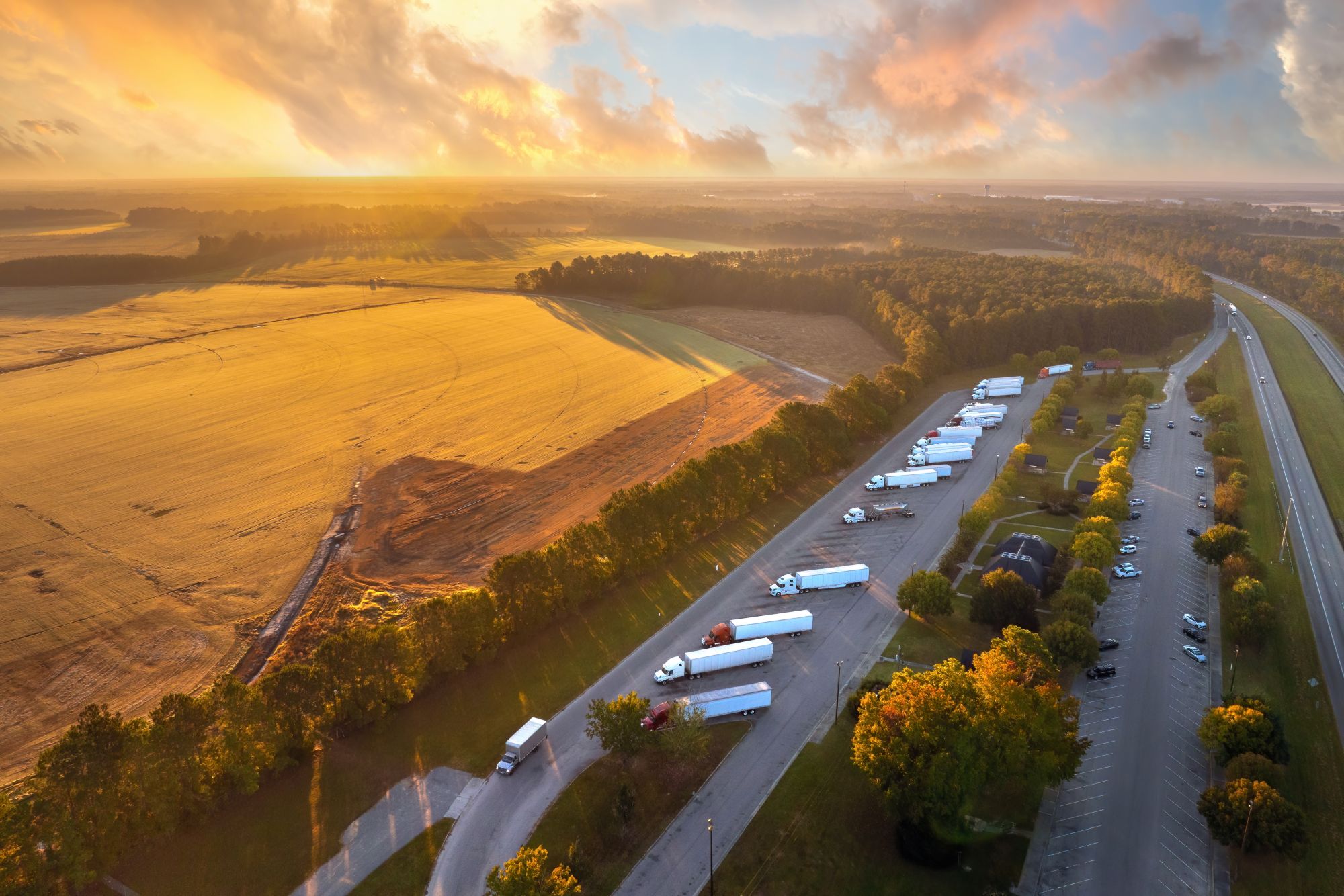
Miranda Blake
Conseils pour sécuriser votre véhicule : Protéger votre camion contre le vol
Créée: 14/11/2024
•
Mise à jour : 14/11/2024
Les entreprises de transport routier du Royaume-Uni et d'Europe peuvent réduire de manière significative le risque de vol de véhicules et de cargaisons. La protection du camion ne se limite pas à la sécurisation du véhicule lui-même ; elle implique une approche holistique qui inclut la technologie, la formation, l'engagement de la communauté et une planification proactive. Avec les bonnes mesures en place, les gestionnaires de flotte peuvent assurer la sécurité des conducteurs et l'intégrité des biens, favorisant ainsi un environnement sûr pour leurs opérations.
Ce que les conducteurs doivent faire
Arrimage du véhicule
Renforcez la sécurité de votre véhicule en utilisant divers dispositifs tels que des cadenas, des scellés à numéro unique et des cordons d'arrimage. Ces dispositifs doivent être appliqués immédiatement après le chargement afin de créer une couche supplémentaire de protection contre l'accès non autorisé.
Il est essentiel de procéder à des vérifications approfondies. Après chaque arrêt, prenez le temps d'inspecter votre camion et sa cargaison. Recherchez tout signe d'altération ou d'activité suspecte. La vigilance est essentielle pour prévenir les vols.
Documentation
Tenir à jour une liste de contrôle complète de la sécurité des véhicules. Cette liste doit pouvoir être consultée par les agents des forces frontalières ou d'autres autorités en cas de besoin. Cela permet non seulement de démontrer votre engagement, mais aussi de faciliter le processus d'enquête en cas de vol.
Emplacements sûrs
Optez pour des places de parking bien éclairées et très fréquentées. Les zones très fréquentées par les piétons et équipées de caméras de surveillance sont moins attrayantes pour les voleurs. Dans la mesure du possible, utilisez des aires de stationnement sécurisées, équipées de clôtures et de systèmes de surveillance avancés ou de personnel de sécurité. Ces endroits offrent un niveau de sécurité supplémentaire. Pour le stationnement de nuit, choisissez des endroits éclairés et surveillés.
Trouvez des parkings pour camions sûrs sur votre itinéraire de transport en commun à l'aide de la [carte SNAP] (https://snapacc.com/map/).
[Chauffeur de camion dans l'obscurité] (https://prodsnapstorage.blob.core.windows.net/public-news/96bdaa93-31e8-48ed-9167-3c107481ccaa-Truck%20driver%20in%20the%20dark.jpg)
Technologie et équipement
L'intégration de technologies de pointe peut considérablement renforcer la sécurité de votre véhicule. Équipez votre camion de systèmes modernes, tels que le suivi par GPS, les dispositifs d'immobilisation et les alarmes anti-panique. Non seulement ces systèmes découragent le vol, mais ils facilitent également la récupération en cas d'incident.
Planification des itinéraires
En outre, une planification efficace de vos trajets peut vous aider à éviter les zones à risque. Utilisez un logiciel qui vous permet de tracer des itinéraires de livraison tout en évitant les points névralgiques connus pour le vol de marchandises. En utilisant la télématique et la technologie GPS pour surveiller votre véhicule en temps réel, vous serez en mesure de suivre sa position et de vous assurer que vous respectez les trajets planifiés.
Ce que les opérateurs de flotte doivent faire
Protocoles et systèmes de sécurité
Un ensemble bien défini de protocoles de sécurité est essentiel pour tous les conducteurs. En tant qu'[opérateur de flotte] (https://snapacc.com/fleet-operators/), vous pouvez fournir des lignes directrices écrites complètes détaillant les mesures de sécurité qu'ils doivent suivre. Une telle approche permet de s'assurer que tout le monde est sur la même longueur d'onde en ce qui concerne les pratiques de sécurité.
Vous devez former les conducteurs à l'utilisation efficace des systèmes installés dans leurs camions. Le fait de se familiariser avec ces dispositifs peut en améliorer l'efficacité. Il est également judicieux de les sensibiliser aux menaces potentielles et à l'importance de la vigilance. Ils doivent connaître les tactiques couramment utilisées par les voleurs et savoir comment réagir de manière appropriée.
En maintenant vos camions dans un état optimal, vous réduisez le risque de pannes susceptibles d'entraîner des vols. Mettez en place un programme d'entretien proactif pour vous assurer que vos véhicules sont toujours en bon état de marche. Des contrôles réguliers permettent de prévenir les défaillances mécaniques susceptibles de rendre vos camions vulnérables.
Communication et communauté
L'établissement de canaux de communication clairs est essentiel pour une gestion efficace de la sécurité. Maintenir une communication ouverte entre les conducteurs, les répartiteurs et le personnel de sécurité. Cela permet de signaler immédiatement toute activité suspecte ou tout problème lié au véhicule. Encouragez les chauffeurs à prendre des nouvelles périodiquement au cours de leur travail.
La collaboration avec la communauté locale peut renforcer vos mesures de sécurité. Collaborez avec d'autres entreprises et les forces de l'ordre locales pour partager des informations sur les menaces potentielles. Une approche collective peut accroître la sensibilisation et déboucher sur des stratégies de prévention de la criminalité plus efficaces. Participez à des initiatives communautaires axées sur ce thème - l'établissement de relations peut créer un réseau de soutien qui contribue à la protection de vos biens.
Plans d'intervention
La mise en place d'un plan d'urgence solide peut atténuer les effets du vol. Élaborez des protocoles clairs pour réagir aux incidents. Ils doivent comprendre les étapes à suivre pour signaler l'incident, contacter les forces de l'ordre et avertir votre assureur. Veillez à ce que tous les conducteurs connaissent ces protocoles - ils doivent savoir comment agir rapidement et efficacement.
Conscience de la situation
Former les conducteurs à être conscients de leur environnement peut prévenir les vols. Apprenez-leur à identifier les activités suspectes autour de leur véhicule et encouragez-les à se fier à leur instinct et à signaler tout événement inhabituel. En outre, insistez sur l'importance de donner la priorité à la sécurité personnelle plutôt qu'à celle de la cargaison. S'ils sont confrontés à un voleur, ils doivent obtempérer et signaler l'incident aux autorités dès qu'ils peuvent le faire en toute sécurité.
Suivi des transactions de carburant avec SNAP
Nous fournissons un système de paiement intelligent qui enregistre et suit automatiquement les transactions de carburant. Lorsque les conducteurs font le plein de leur véhicule dans l'un des plus de 3 500 points de vente au Royaume-Uni, il leur suffit de présenter leur carte SNAP Fuel pour payer la transaction, ce qui élimine le besoin d'argent liquide ou de cartes de crédit et simplifie le processus.
Le système ajoute automatiquement chaque transaction de carburant au compte associé au numéro de plaque d'immatriculation du véhicule. Grâce à cette automatisation, les conducteurs n'ont plus besoin de collecter et de soumettre manuellement les reçus, ce qui réduit la charge administrative et le risque d'erreurs.
Les gestionnaires de flotte reçoivent des factures mensuelles détaillées qui donnent un aperçu de l'activité de tous leurs véhicules, ce qui permet un suivi aisé de la consommation de carburant et des dépenses pour l'ensemble de la flotte.
SNAP Fuel s'intègre aux autres services du compte SNAP, ce qui permet aux gestionnaires de flotte de surveiller non seulement les transactions de carburant, mais aussi les services de stationnement et de lavage dans un seul compte, offrant ainsi une vue d'ensemble des opérations et des dépenses. [Pour en savoir plus sur SNAP Fuel, cliquez ici] (https://snapacc.com/snap-fuel/).



